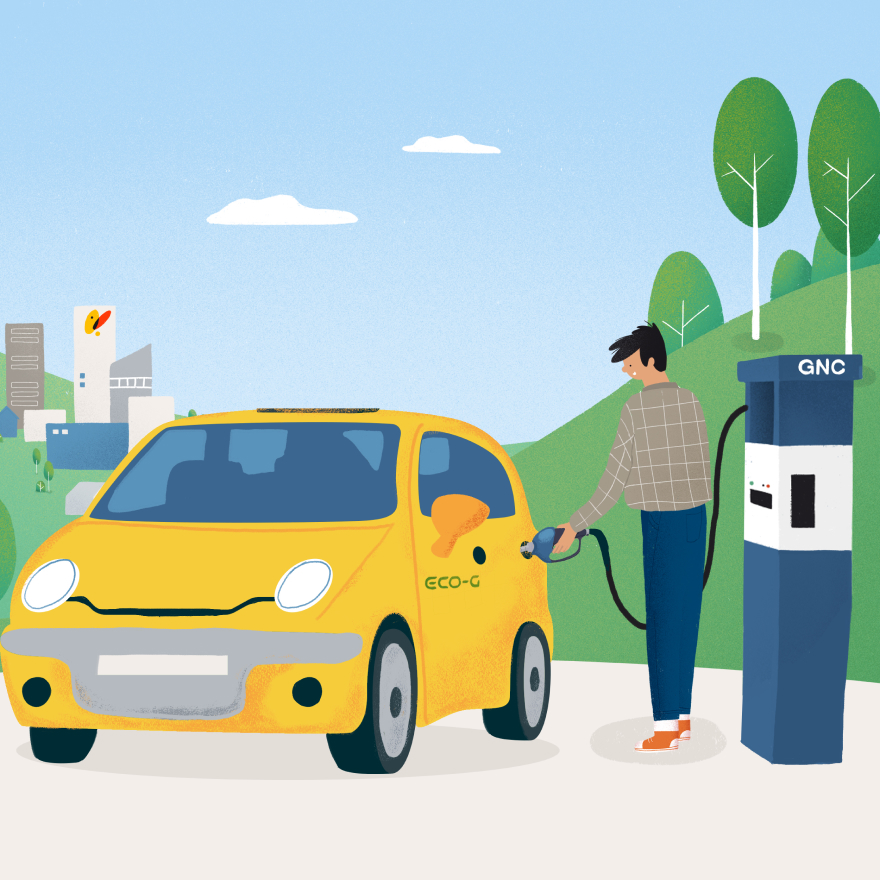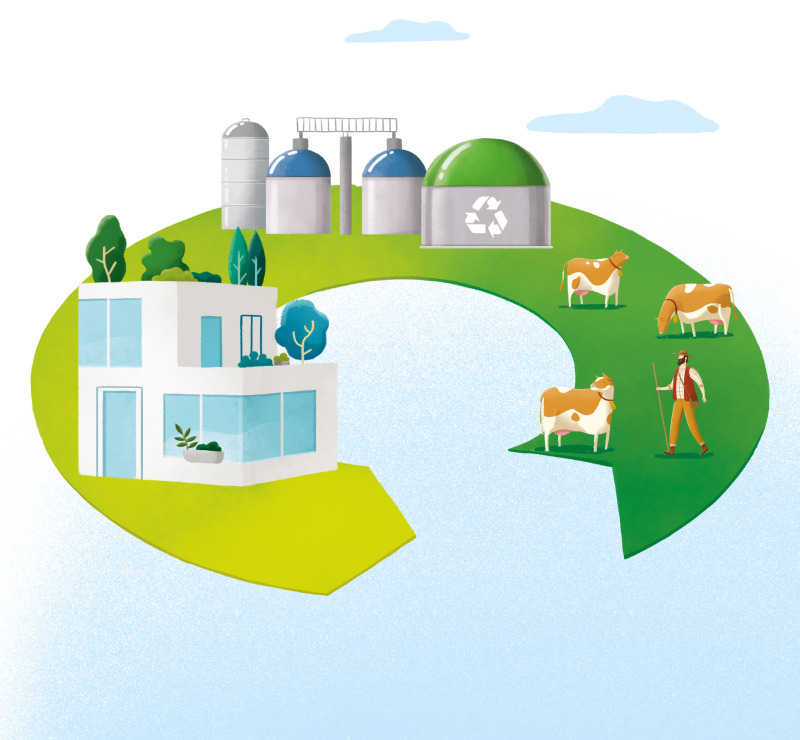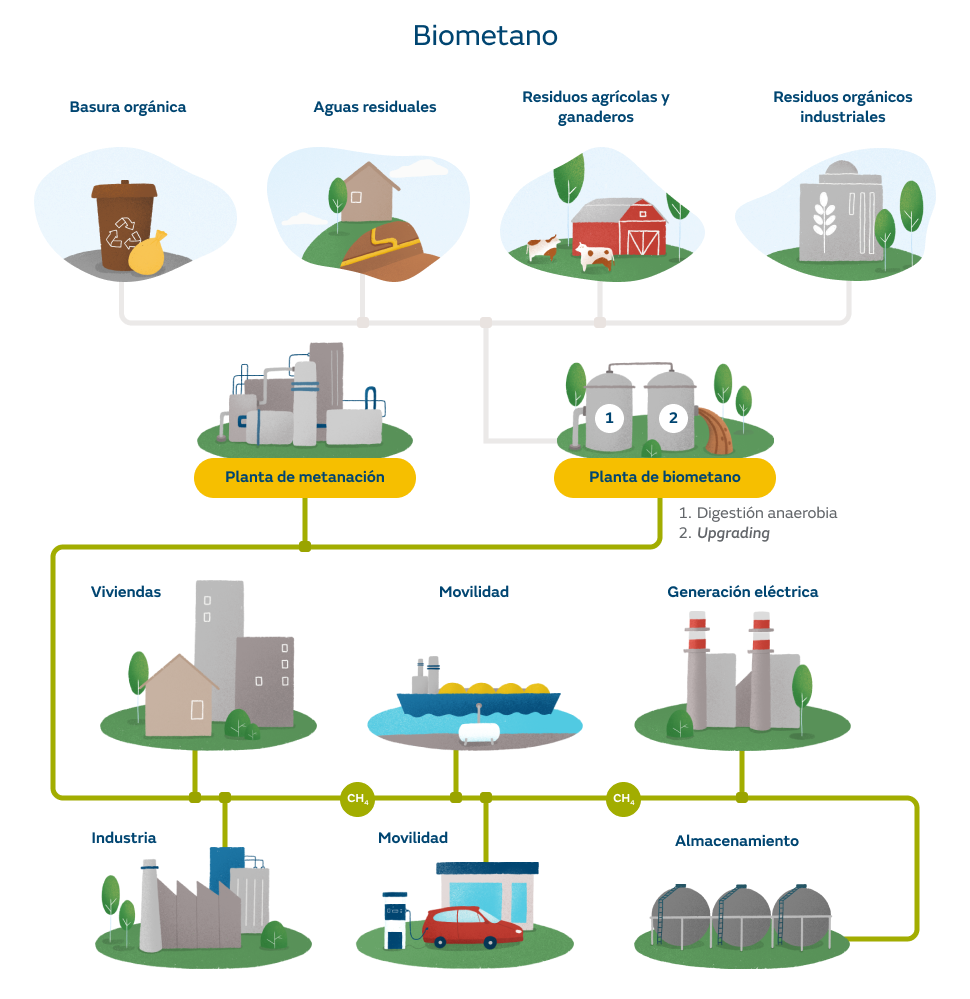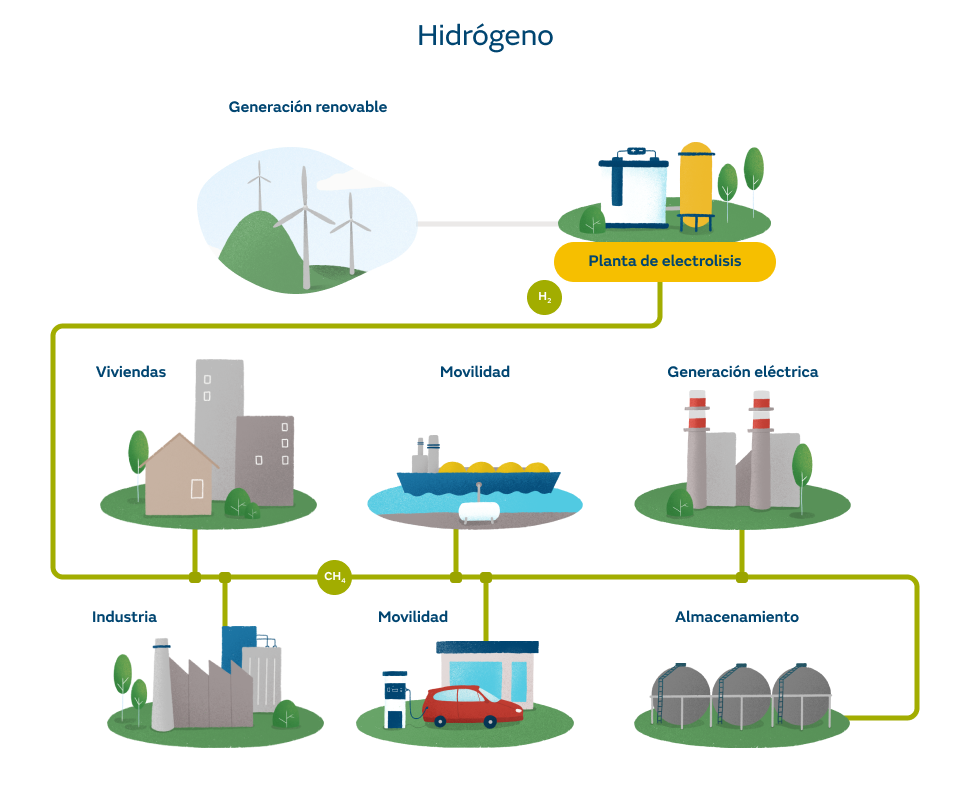What is renewable gas?
Discover the main characteristics of renewable gases
Learn about the process of obtaining
Plants in operation
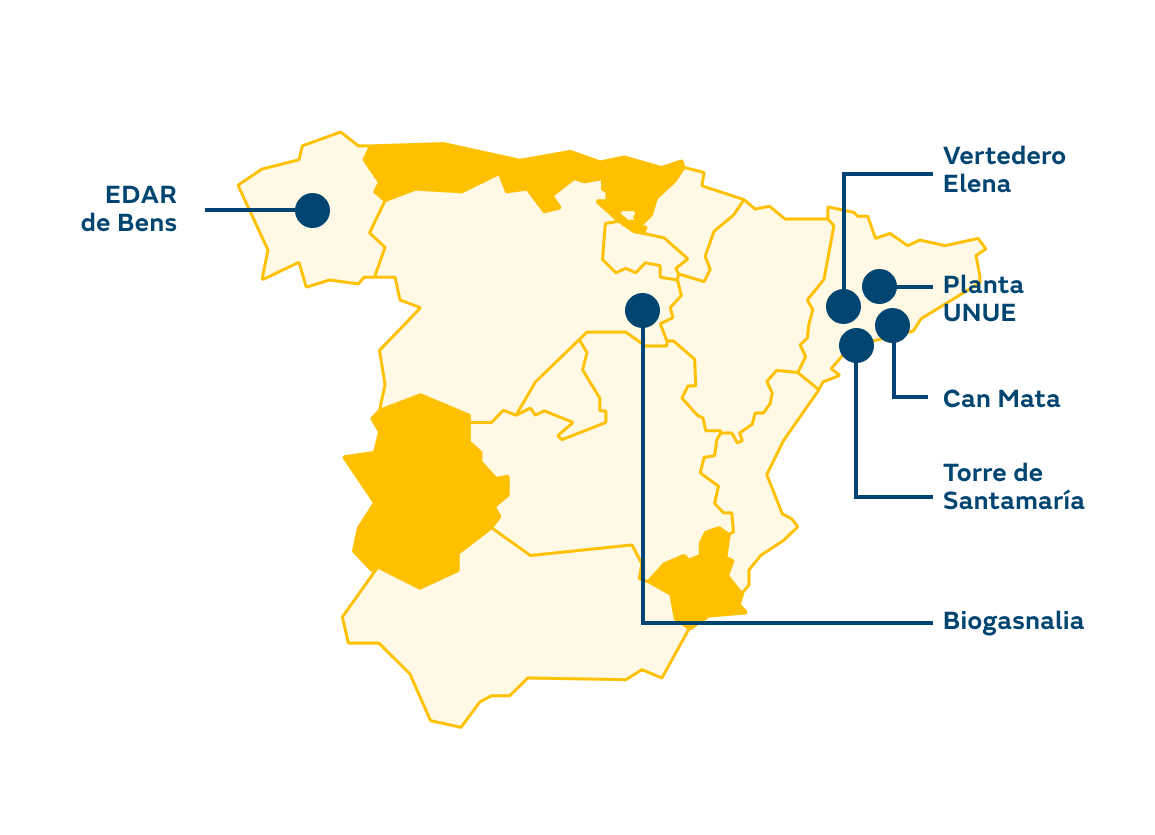
Elena Landfill – Cerdanyola del Vallés, Barcelona
Promoter Naturgy This renewable gas plant next to the Elena landfill in Parc de l’Alba represents a major milestone: it was the first to inject renewable gas from a landfill into the gas distribution network in Spain. But that’s not all. It also represents a green energy project, will support the circular economy and is a clear reflection of our support for local energy production. With this facility, we are demonstrating our capacity for success on this type of project based on the strength of our distribution network, which is ready to distribute renewable gases due to the investments made in recent years, the existing gas infrastructure in Spain and its contribution to supply security.
- 15 Gwh/year, enough to supply 3,000 homes.
- Reduction of CO2 emissions by 3,000 tonnes/year, equivalent to the planting of 6,255 trees.
- Biomethane from landfill waste.
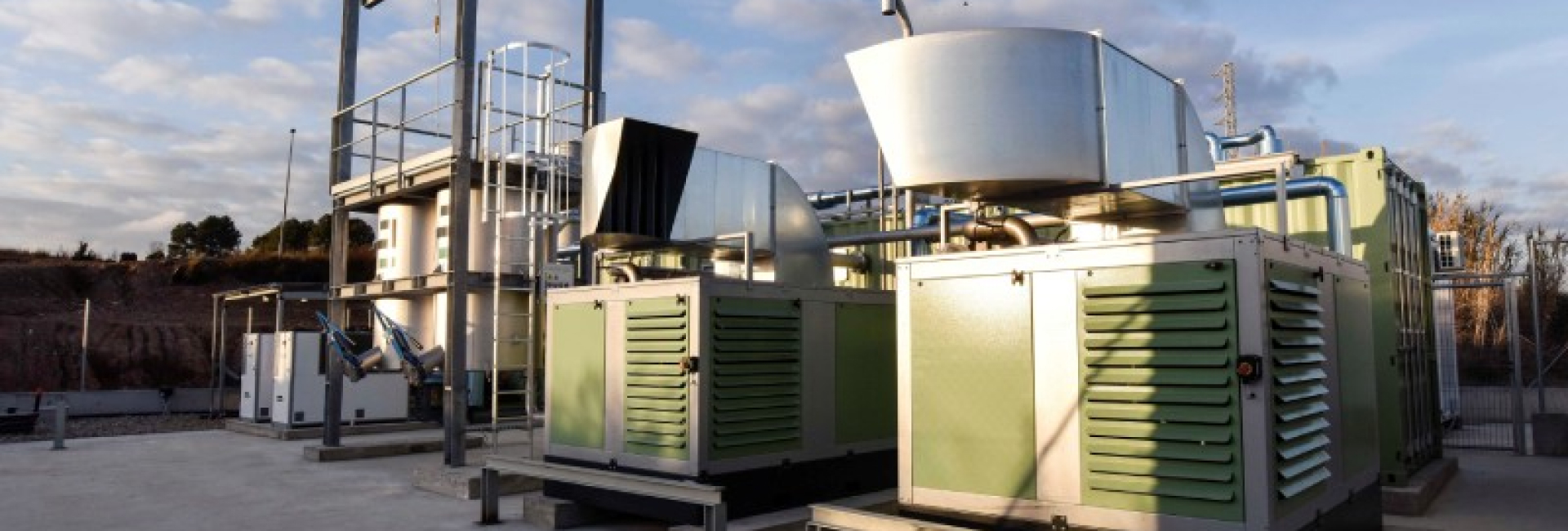
Biogasnalia – Burgos
The biogas plant forming part of the UNUE Project on the Biogasnalia estate is the first plant in Spain that injects biomethane produced from agri-food waste. It receives up to 90 tonnes/day of waste from various food and agri-food industries. Switching the biogas plant over to biomethane enables production continuity and fluidity, without stopping and without losses.
- 25 Gwh/year, the annual energy supply of 5,000 homes.
- Reduction of CO2 emissions by 5,000 tonnes/year, equivalent to the planting of 10,425 trees.
- Biomethane from industrial waste.
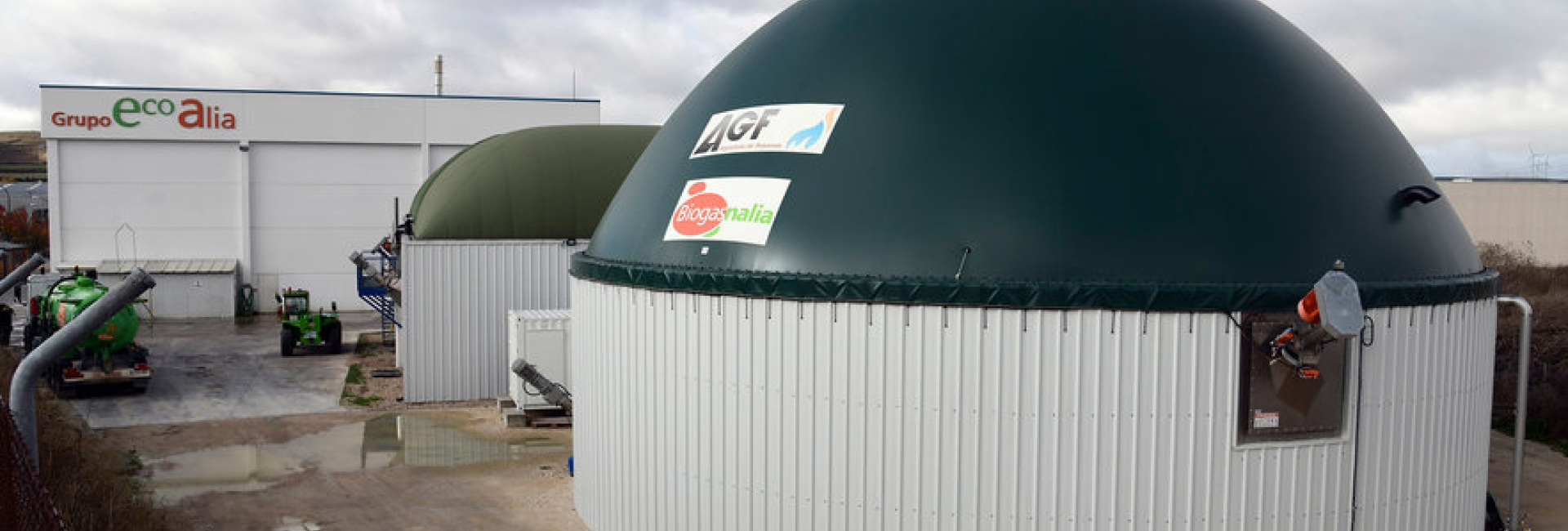
Torre de Santamaría – Vallfogona de Balaguer, Lleida
Biogas production at this facility takes place using the organic waste produced by cows, another major milestone: it is the first to use the organic waste produced by animals. This waste is enriched via a decomposition and enrichment process to convert it into renewable gas. It is a fine example of supporting a sustainable economy, a circular economy and the use of an extremely abundant form of waste, the quantity of which can lead to problems elsewhere. Thanks to this plant, we ensure this resource becomes an opportunity.
- 30 GWh/year of biomethane, enough to supply 6,000 homes.
- Reduction of CO2 emissions by 6,000 tonnes of CO2/year, equivalent to the planting of 12,510 trees.
- Biomethane from organic livestock waste.
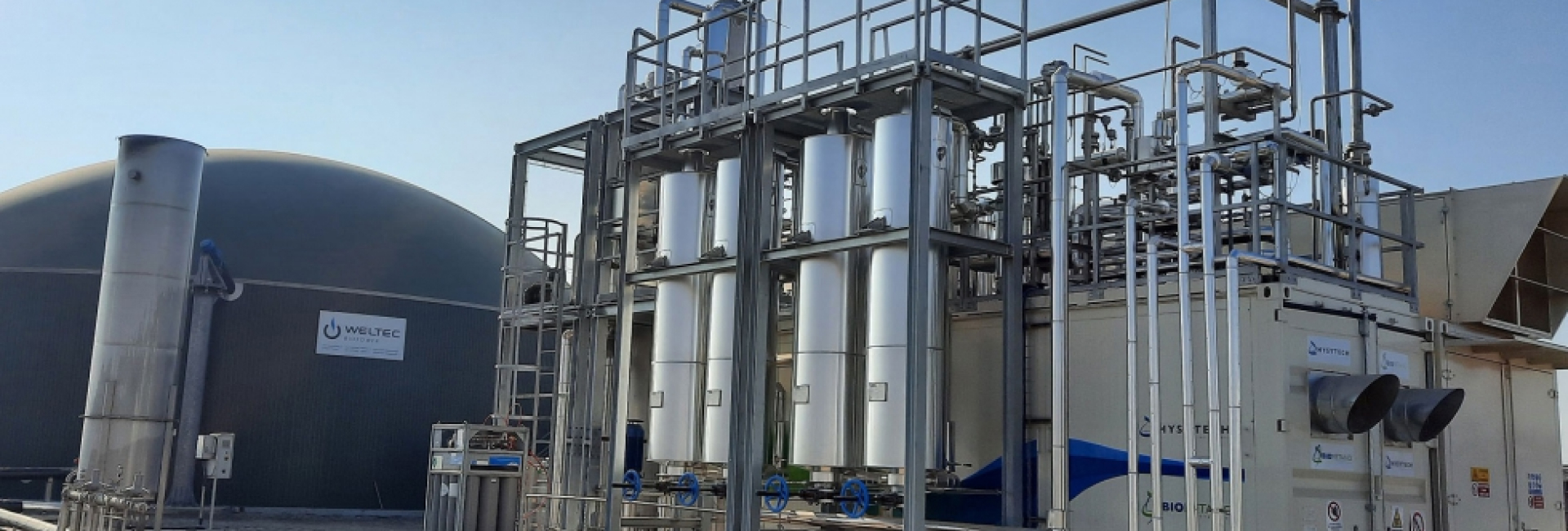
Bens WWTP – La Coruña
The state-owned company Edar Bens SA is responsible for treating the wastewater from council authorities in A Coruña and also represents a major milestone: in 2016, an initiative was launched to install the first Mixed Renewable Gas Unit. This unit increases the usage effectiveness of biomethane obtained from the treatment of urban wastewater. The goal is to achieve 100% useful power generation. Given that the company was already using biomethane at its own installations, we partnered with them to inject their biomethane into the natural gas network and thereby harness this resource more efficiently.
- 5 GWh/year of biomethane, enough to supply 1,000 homes.
- It will avoid emissions of 1,000 tonnes of CO2/year, equivalent to the planting of 2,085 trees.
- Biomethane from the Waste Water Treatment Plant.

Can Mata – Els Hostalets de Pierola, Barcelona
PreZero Spain has operated this facility, which treats urban and industrial waste from Barcelona and its surrounding area, for over 30 years, treating more than 22 million tonnes of waste in that time. The waste stored at Can Mata produces almost 40 million cubic metres of biogas per year, used up to now to produce thermal energy for drying concentrates from leachate treatment, as well as for producing electricity and thermal energy to manufacture construction materials. Thanks to this new technology, the controlled waste repository will recover 100% of the biogas.
- It will produce 70 GWh/year of biomethane, equivalent to the annual consumption of 14,000 homes.
- This will avoid the emission of 17,000 tonnes of CO2 a year into the atmosphere.

Granollers WWTP – Granollers, Barcelona
By implementing this project, Nedgia guarantees another 27 GWh/year of biomethane will be injected into the grid, thus contributing to the penetration of renewable gas through its infrastructure. The facility, driven by the Consorci per a la Gestió dels Residus del Vallès Oriental and the Consorci Besòs Tordera, produces biomethane from the management of 55,000 tonnes of organic waste and the treatment of 12 million m3 of wastewater per year.
- It will produce 27 GWh/year of biomethane, equivalent to the consumption of 4,800 homes.
- This will avoid the emission of 9,700 tonnes of CO2 a year into the atmosphere.


Do you have any questions?
You may also be interested in
More about Nedgia






